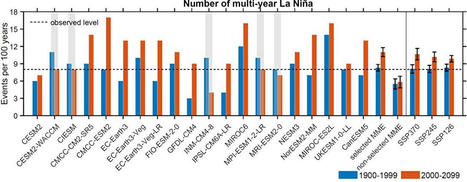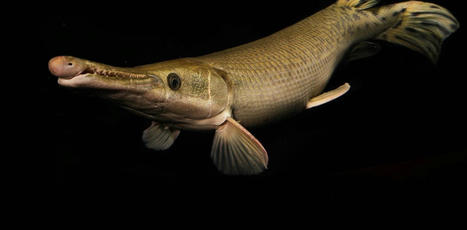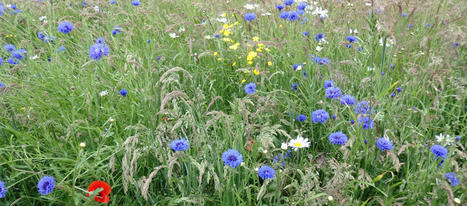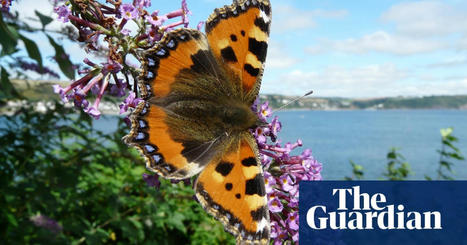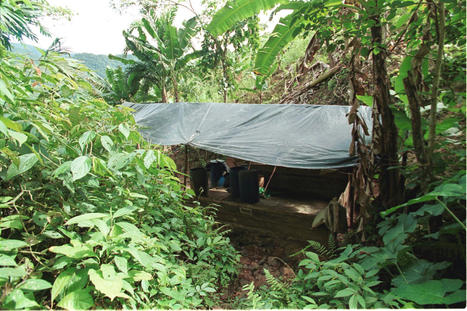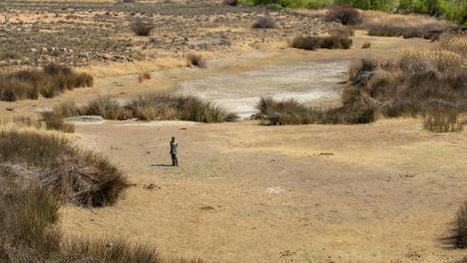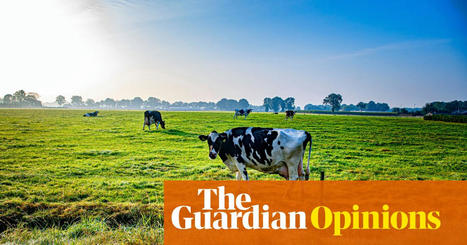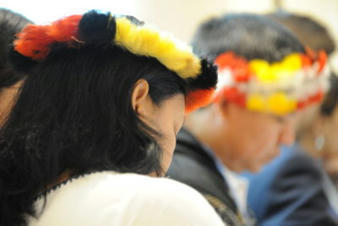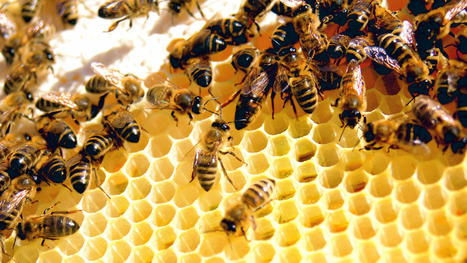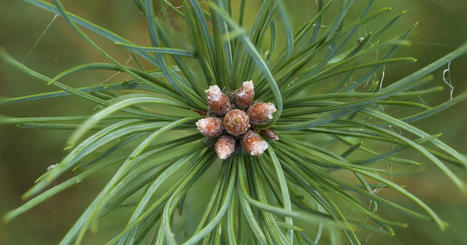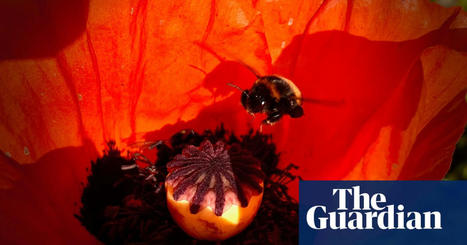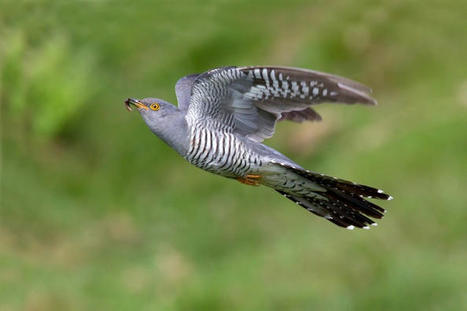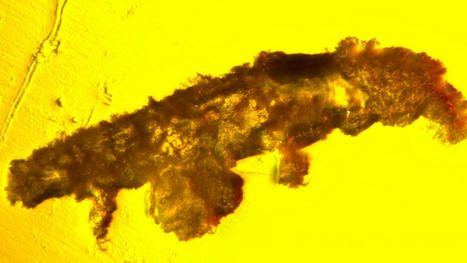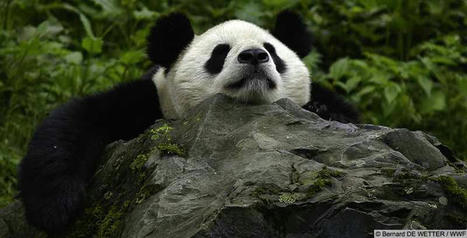 Your new post is loading...
 Your new post is loading...
Bees can’t get enough hemp pollen, and there’s a good reason for it.
Southern Oscillation (ENSO) is the Earth's most consequential interannual climate fluctuation. Alternating irregularly between warm El Niño and cold La Niña phases, it brings shifts in ocean surface temperature and disrupts wind and rainfall patterns across the tropics.
Rivers have been the lifeblood of human civilization throughout history, and yet we know surprisingly little about what lives in many of them—including the giant creatures that prowl their depths.
The GCV Green Network is delighted to announce the launch of Clyde Grasslands, a project aimed at boosting grassland habitats for wildlife across the Region. Clyde Grasslands will help to restore some of the 97% of species rich grasslands lost across the UK since the 1940’s in the UK, by creating and restoring wildflower meadows and linking them up through greenspaces, road verges and farmland. On the ground delivery will be guided by recently completed grassland opportunity mapping analysis, funded by Nature Scot’s Nature Restoration Fund, which has identified key locations for grassland protection, management and expansion. 97% of grasslands and wildflower meadows have been lost since the 1940's in the UK. Rory McLeod, Development Officer for the GCV Green Network said, “By working with a wide range of partners, including landowners, farmers, local authorities and business, we can help reverse the decline of pollinators through restoration of grassland habitat.” “This is crucial if we are to help restore nature and create pathways for wildlife to move across the land. The role grasslands also play in storing and sequestering carbon means Clyde Grasslands will be a vital part of our response to both the Climate and Nature Emergencies” Clyde Grasslands is part of the Green Network suite of habitat projects which emerged from the Blueprint (launched in 2019). Other habitat projects launched to date are the Clyde Climate Forest and Clyde Peatlands projects, with Clyde Wetlands (aimed at wetland restoration) currently in development. To learn more about this project follow us @GCVGreenNetwork @ClydeGrasslands Go to publications page to download >>
Looe Island is a case study in how to boost biodiversity, a place where the wardens, Claire Lewis and her partner, Jon Ross, are the only residents, alongside gulls, godwits and comma butterflies...
From plant to powder, cocaine is having devastating consequences for forests in Colombia—and the planet's forests.
Developing countries suffer from a significant gap in terms of scientific research related to climate change, a new study shows, even though they contain the communities and people most vulnerable to extreme weather, rising sea levels and other serious impacts of climate change.
An insider talks about efforts to cut methane, one of the most prevalent greenhouse gases but which has had little attention...
While the majority of tropical deforestation is driven by beef, soy, palm oil, and wood products, many other commodities and human activities play a more limited role in the problem.
[DOWNLOAD] Birds of Southern California PDF - KINDLE - EPUB - MOBI...
Indigenous voices on the environment are finally being heard as Marseille hosts a global biodiversity summit, with a call to protect 80 percent of the Amazon, as well as a “counter conference” highlighting the conservation movement’s historic violation of people’s rights. For the first time in its seven-decade history, the International Union for Conservation of Nature (IUCN) is including Indigenous peoples as full voting members in their own right, rather than under the NGO category. Dozens of Indigenous meetings are happening at the summit — which occurs every four years — with representatives from 23 organizations. Greater inclusion of Indigenous representatives comes as the European “fortress conservation” model, which resulted in vast human rights abuses and an estimated 20 million people displaced from their homelands worldwide since the 19th century, is increasingly being challenged. Historically, the global conservation movement was based on the idea that protected areas flourish free from human disturbance, but a growing body of evidence shows that Indigenous communities are the best at looking after wildlife, and that as much as 80 percent of the world’s remaining forest biodiversity lies within Indigenous peoples’ territories. José Gregorio Díaz Mirabal, a member of Venezuela’s Wakuenai Kurripaco people and coordinator of the Congress of Indigenous Organizations of the Amazon River Basin (COICA), which represents more than 2 million Indigenous people, said they had been fighting for decades to be heard. “We come to the IUCN with our voice and voting rights. We seek to build a new alliance with equal rights on equal terms, but we see that there is still much to do, so much to recognize,” he said. “Less than 1 percent of all the funding that is invested in protecting intact biodiversity and mitigating climate change in our territories reaches our communities, and that has to change. It’s absurd that so much of the funding goes to consultants who are sent to tell us what we already know about how to conserve what we are already conserving.” Representatives from countries across the world will vote on motions this week that will shape future global conservation policy and the allocation of finance. COICA’s Amazonia por la vida (Amazonia for Life) campaign motion is demanding protection of 80 percent of the Amazon basin by 2025 (protected areas and Indigenous territories make up about 45 percent currently) with the emphasis on Indigenous peoples managing those protected areas. They are asking governments to recognize 100 percent of Indigenous land in the Amazon and ban all forms of extractive industries in those areas. A record number of environmental defenders were killed in 2019 for protecting their land, 40 percent of whom were from Indigenous communities. “Science is saying the best-conserved areas are Indigenous territories … yet we have the highest level of murder,” Díaz Mirabal said. “National parks receive funding and support from governments, but when it comes to our Indigenous territories, we’re left to spill our own blood to defend it. Now it is time for our Indigenous territories to be protected with the same level of support and legislation,” he said. As well as showcasing a range of ideas from campaigners, scientists and conservationists, the summit provides policymakers with a chance to discuss issues in the run-up to the COP15 “Paris agreement for nature,” due to be negotiated in Kunming next year. The headline target is likely to be protecting 30 percent of the planet for nature by the end of the decade (the “30x30” target). The draft COP15 agreement includes a clause that traditional knowledge of Indigenous peoples and local communities should guide decision-making “with their free, prior, and informed consent.” But Indigenous groups, academics, and campaigners from 18 countries gathered in Marseille at the “Our Land, Our Nature” congress, a “counter-summit” on the eve of the IUCN meeting, called for land rights to be at the heart of conservation, not protected areas. More than 3,000 people attended the event, either in person or online, which included a protest march through the French city. “The 30x30 target is a structural problem,” said Mordecai Ogada, director of Conservation Solutions Afrika. “We need to rethink the definition of protected areas, those that exist, and we need to look for a more sophisticated model of biodiversity and conservation. That’s where the big organizations have such a challenge, because they find it very difficult to change their own structures.” The alternative summit included representatives from Survival International, Rainforest Foundation UK, and the Minority Rights Group, as well as a number of Indigenous people with different perspectives on the usefulness of protected areas. Juan Pablo Gutiérrez, a representative of the Yukpa people in Colombia but living in exile in France, said areas that governments were designating as “protected” had been safeguarded for years by Indigenous people. “What’s happening with 30x30 is that governments want to distract global opinion by proposing solutions that don’t relate to the real problem at all. If you want to attack climate change, you need to attack the causes that are leading to it,” he said, citing western consumption and overexploitation of resources as the key drivers of ecological destruction. A UN report published earlier this year found Indigenous people in South America were the best at looking after forests, with deforestation 50 percent lower than elsewhere, according to a review of more than 300 studies. Representatives at the Our Land, Our Nature gathering argued that there was little scientific evidence that protecting 30 percent of the planet would stem biodiversity loss. The previous 10-year UN target agreed in 2010 in Aichi, Japan, set goals that by 2020, 17 percent of terrestrial areas and 10 percent of coastal and marine areas would be conserved. Lara Dominguez, a lawyer with the Minority Rights Group, said: “Despite being very close to achieving the 17 percent target in many states, biodiversity loss has reached unprecedented levels. Even though we have more protected areas, it hasn’t actually impacted biodiversity in a positive way.” Dominguez believes these policies are driven more by politics than science and argues that a rights-based approach to conservation would be far more effective. Francisco Ramiro Batzín Chojoj, legal representative of the Guatemala-based Indigenous organization Sotz’il, said it was important that Indigenous people had a seat at the table and that working towards the 30x30 target was “fundamental”. “We are calling for Indigenous people to be respected in all these initiatives because it’s essential they are involved.” Stewart Maginnis, global director of the IUCN’s nature-based solutions group, said: “The 30x30 can and must work to support Indigenous peoples by strengthening their custodianship, voice and rights. “Protection for nature conservation need not and should not exclude people,” he said. “Many of the world’s protected and conserved areas are managed in a way where people and communities live and work within their boundaries.” A UN policy brief on human rights and the environment, released last month, emphasized the need for a dramatic departure from “conservation as usual.” Neville Ash, director of the UN Environment Programme conservation monitoring centre, said Indigenous people and communities who governed large areas of land were often not recognized for their extensive contributions to nature conservation. “This needs to change,” he said. “The draft framework is explicit on the importance of employing rights-based approaches for its implementation, and governments and other actors will need to learn from mistakes of the past and be held accountable for delivering on these future commitments in line with human rights obligations.” —Phoebe Weston, The Guardian
|
Adding five - and seven - sided cells in pairs during nest building helps the colonyfit together differently sized hexa gonal cells , a new study shows.
Scientists have found urban cooling solutions in the ancient wisdom of classical Chinese gardens, whose large green spaces and water features create wider cooling zones.
A new pathogen arose in Finland – our research anticipates its potential effects Tags: Climate Forests and forestry Preparing for climate change risks is a solid part of our research at Natural Resources Institute Finland (Luke). Climate change not only increases the risks caused by native pests but is also forecast to bring new pests to Finland. We therefore strive to monitor the various pests that threaten the Finnish forests, conduct research on them, and anticipate the potential risks they may cause. Exceptional conditions turned a harmless companion into a serious pathogen The summers of 2021 and 2022 were hot and dry. Trees stressed by the drought were in trouble, as they became too weak to defend themselves effectively against pests and pathogens. The conditions were especially serious in rocky and barren sites, where the effects of drought are most severe. Because of the drought, the fungus Diplodia sapinea emerged as a pathogen along the south-west coast of Finland. The previously symptomless symbiont of pines had transformed into a deadly pathogen in the drought-stricken trees and began to kill both seedlings and mature pines. “Diplodia sapinea is already a common pest in Central Europe, but in Finland it is still often confused with symptoms caused by other pathogens during drought”, says Dr. Eeva Terhonen, who is responsible for studying the disease at Luke. Research on the new pathogen started with citizen observations The research started by determining how widely the disease had spread. Information was gathered by means of citizen science. The aim was to obtain suspected samples of D. sapinea from citizens from all over Finland. To date, 1,200 samples have been tested, one third of which have been positive for D. sapinea. Currently, D. sapinea has spread across the south-west coast and some inland regions of Southern Finland. Genetic analyses are currently being performed on the collected strains, which will enable us to assess the probable distribution history of the fungus. The research was funded by Luke and Alfred Kordelin Foundation. However, as D. sapinea also lives in pine trees without causing symptoms, its true distribution is yet to be determined. How far north can the disease kill trees if droughts become more common? Which insect species spread D. sapinea, and which other plants can serve as its hosts? The research will continue by addressing these questions, among others. The future does not bode well for pines According to climate change scenarios, hot and dry periods during the summer will become more probable. This will also increase the risk of the disease caused by D. sapinea especially in dry and barren sites, which are typically places where only Scots pine can thrive. This is one of the challenges of this pathogen: it strikes in places where replacing pine with other tree species is difficult or even impossible. Pine is also an important urban and park tree, especially in the coastal region. Under climate change, the health of forests can be threatened not only by pests and pathogens that we already are familiar with, but also by usually harmless fungal partners such as the D. sapinea. They can become opportunistic and deadly pathogens when the changing climate favours them, by weakening their host trees. More information Markus Melin Research Manager, Research Scientist +358295322194 markus.melin@luke.fi Eeva-Liisa Terhonen Senior Scientist +358295322484 eeva.terhonen@luke.fi Back to the top of the page
The Marches, Shropshire: On a bright day after a thundery night, the bees are sometimes three or four to every flower
The UK’s leading birdnews service since 1991. Sending over 90,000 instant and reliable birdnews reports each year. On pagers, smartphones, tablets and online.
Campaigners fear net zero strategy is being hamstrung by Rishi Sunak, who refuses to provide adequate funding...
During the Quaternary period, the eastern Sahara's hydroclimate oscillated between wet and dry intervals.These oscillations caused drastic changes in…...
The world is slowly returning back to normal and the Arctic Circle 2021 conference will take place in the same format as in previous years.
Scientists are calling it a “once-in-a-generation” discovery.
This daily column at GNN.org features all the good news, anniversaries and notable birthdays from this day in history—September 11.
The world's most influential conservation congress passed resolutions Friday calling for 80 percent of the Amazon and 30 percent of Earth's surface—land and sea—to be designated "protected areas" to halt and reverse the loss of wildlife.
|
 Your new post is loading...
Your new post is loading...
 Your new post is loading...
Your new post is loading...






